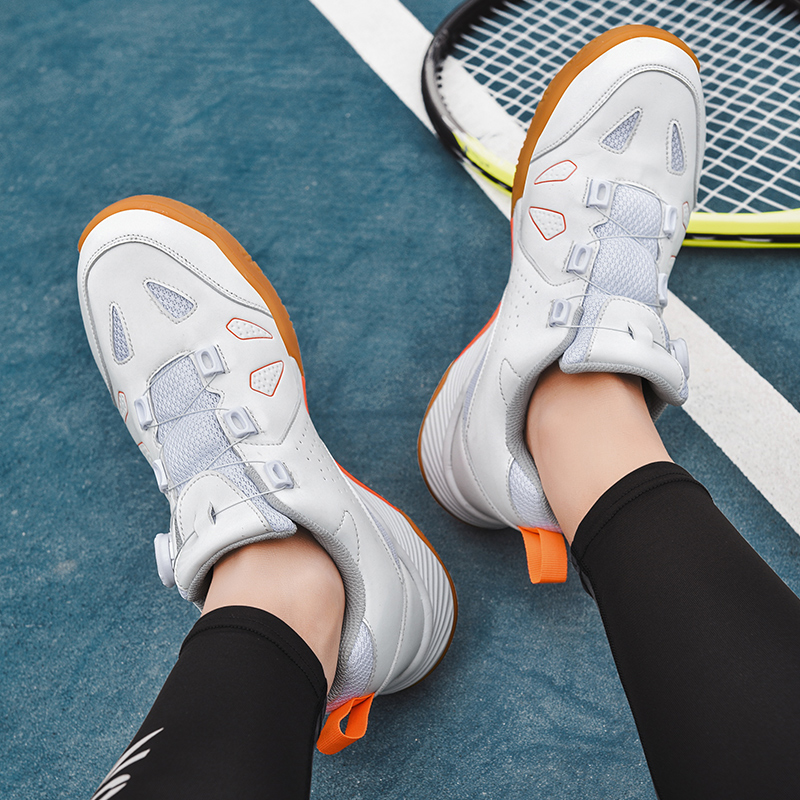
Pickleball is a high-intensity sport that requires quick movements, sudden stops, and lateral movements. Players must have proper footwear to support their movements, reduce the risk of injury, and enhance their gameplay experience. Flexibility is an essential factor in determining the effectiveness of pickleball shoes. The right level of flexibility in a pickleball shoe allows players to move with ease, maintain stability and balance, and reduce the risk of injury. This essay explores the role of flexibility in pickleball shoes and how it contributes to the overall gameplay experience.
- Enhanced Comfort: Flexibility plays a crucial role in enhancing the overall comfort of pickleball shoes. Shoes that are too stiff or rigid can lead to discomfort, pressure points, and blisters. The right level of flexibility allows the shoe to conform to the shape of the foot, providing a comfortable and snug fit. This, in turn, allows players to focus on their gameplay rather than discomfort and pain.
- Improved Range of Motion: Flexibility is essential in allowing players to achieve a full range of motion during gameplay. The right level of flexibility in a pickleball shoe allows players to move quickly, change direction, and make sudden stops without restrictions. Shoes that are too stiff can limit the range of motion, resulting in reduced agility and performance.
- Better Traction: Flexibility also plays a role in improving the shoe’s traction. The sole of a pickleball shoe needs to be flexible enough to maintain contact with the court surface, providing excellent grip and stability during gameplay. Shoes that are too rigid often result in less traction, increasing the risk of slipping or sliding on the court.
- Enhanced Stability: Flexibility is crucial in maintaining stability during gameplay. A shoe with the right level of flexibility can bend and pivot, allowing players to maintain balance and control during lateral movements. Shoes that are too stiff can limit the foot’s movement, increasing the risk of falls or injuries.
- Reduced Risk of Injuries: Flexibility plays a critical role in reducing the risk of injuries during gameplay. Shoes that are too stiff or rigid can lead to stress and strain on the feet and joints, increasing the risk of injuries such as ankle sprains, shin splints, and plantar fasciitis. The right level of flexibility in a pickleball shoe allows for shock absorption and reduces the impact of sudden jolts and impacts on the court.
- Customizable Fit: Flexibility also contributes to the shoe’s customizable fit, allowing players to adjust the shoe’s tightness according to their preferences. Shoes that are too stiff or rigid do not conform to the shape of the foot, leading to discomfort and a less secure fit. The right level of flexibility allows the shoe to conform to the foot, providing a snug and secure fit that enhances overall performance.
- Versatility: Flexibility in pickleball shoes allows for versatility in their use. Shoes that are too stiff or rigid are often specific to certain sports or activities, limiting their use. The right level of flexibility allows pickleball shoes to be used for various activities and sports, such as tennis, volleyball, or running.
Conclusion: Flexibility plays a critical role in the effectiveness of pickleball shoes. The right level of flexibility allows players to move with ease, maintain balance and stability, reduce the risk of injuries, and enhance their gameplay experience. Shoes that are too stiff or rigid can result in discomfort, reduced range of motion, and increased risk of injuries. By prioritizing flexibility in pickleball shoes, players can optimize their performance, reduce the risk of injuries, and enjoy the game to the fullest. When selecting pickleball shoes, it is essential to consider the level of flexibility that suits individual preferences and playing style. With the right footwear in hand, pickleball players can enjoy a safe, healthy, and exciting game.